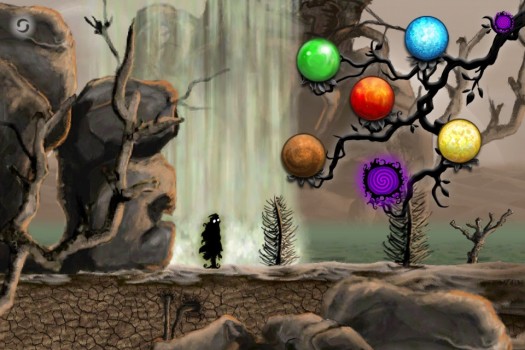![]() I love mobile gaming for plenty of reasons, but if I had to pick just one it would be this: it never stops surprising me. Every week there’s a dozen new things worth checking out, and every so often something special comes right out of nowhere. Nihilumbra ($2.99) is one of those games; I sat down to check it out and spent a handful of hours with a big, foolish grin plastered across my face. It’s gorgeous, entertaining and clever. And that’s before we get to the story.
I love mobile gaming for plenty of reasons, but if I had to pick just one it would be this: it never stops surprising me. Every week there’s a dozen new things worth checking out, and every so often something special comes right out of nowhere. Nihilumbra ($2.99) is one of those games; I sat down to check it out and spent a handful of hours with a big, foolish grin plastered across my face. It’s gorgeous, entertaining and clever. And that’s before we get to the story.
The tale is told through text that becomes part of the environment, a lovely effect. It starts as so many do: you are born. But you’re an oddity, a piece of the Void that wants to be free. And you succeed, slipping out of its grasp, but the Void won’t let you go. And so begins the central conflict of Nihilumbra.
The Void sends creatures to reclaim you, and you must learn to defend yourself. There is nothing in your formless dark body to save you, so you reach out for anything to help. The world provides, giving you the power of color. This is the best part. Each world you explore has a color to share, and each color is a new power.
But the powers aren’t only good for one stale function; you can use them for anything that might make sense. Blue, for instance, gives you the power of ice. You can lay down ice to speed up your movement, or to make a Void creature slide off an edge. You can also lay it down under something that would otherwise be too heavy to move. Paint paths of colors with your fingertips, then use your own Void power to erase them away.
By the time you reach the end of the rather melancholy story, you have many powers at your command. It can be quite a challenge to deploy them all correctly, to come up with all the ways you can combine them and use them against your enemies. And then the story approaches its satisfying conclusion, and you discover the whole thing was practically an extended tutorial leading up to the real challenge. That’s when my mind was blown, and I learned I wasn’t nearly prepared enough. Ride it out, you’ll see what I mean.
When Nihilumbra becomes difficult, it doesn’t do so reservedly. The final levels are insane, requiring you to have a full mastery of the colors at your command. They’ll take quick reflexes and no small measure of cleverness if you’re to work out the puzzles and reach your goals. The difficulty curve suffers as a result; too easy for too long, then far too hard, but it’s well worth working your way through.
From an artistic point of view, though, the game is a tiny bit lacking. The backdrops are gorgeous, but they’re also repetitive. The style is elegant, but a little derivative. The story is compelling, but the translation stumbles once or twice. And there are a few cliches brought to bear before the end.
But that’s practically quibbling. Nihilumbra is a must-play game, whether you’re in it for the story or the art, the puzzles or the platforming. They may not be the best individually, but they make a beautiful whole. And trust me when I say that you’ll be well and truly challenged if you make it to the very end. You can judge Nihilumbra by its cover, but it’s better in motion—far, far better. That’s a pleasant surprise, wouldn’t you say?

